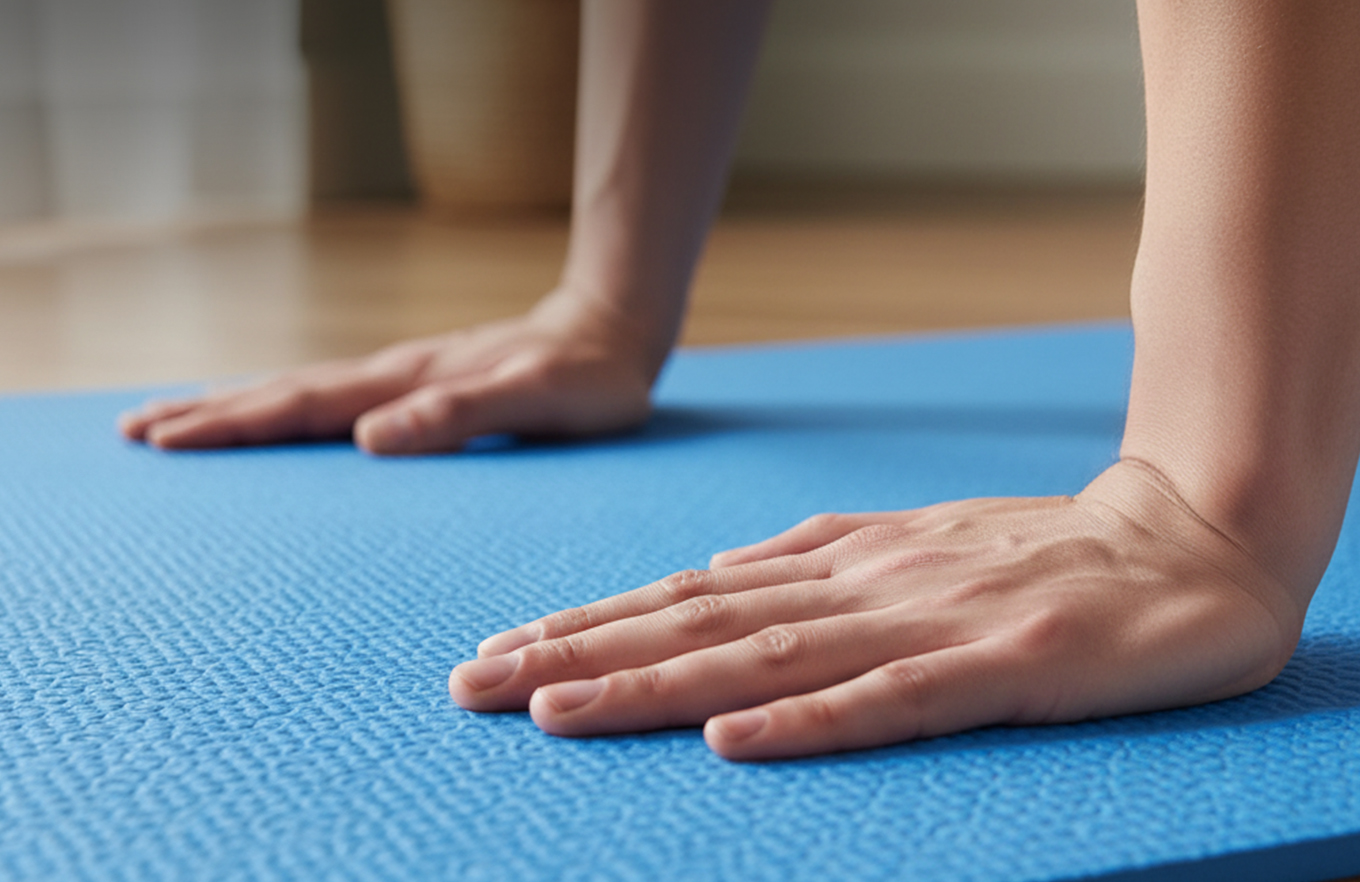November 3, 2025
The use of EVA foam has completely transformed how yoga mats are designed and experienced. Known for its lightness, flexibility, and shock-absorbing quality, EVA foam has become the gold standard for creating mats that combine comfort and endurance. Yoga practitioners worldwide appreciate the soft yet resilient surface that cushions the body while offering stable support during intense poses.
Well, EVA foam has become such a game-changer; it strikes the perfect balance between form and function. As yoga continues to gain popularity, every yoga mat manufacturer aims to design mats that meet professional and personal needs. With advanced materials like EVA foam, comfort and durability are no longer trade-offs but a combined strength.
EVA foam stands out because of its exceptional performance and versatility. It’s a closed-cell foam, which means it doesn’t absorb moisture, making it hygienic and easy to clean. This is essential for yoga mats that are used frequently and exposed to sweat. Moreover, EVA foam provides consistent support without compressing over time, maintaining its original form and thickness.
Many top manufacturers, including Samad Group, are utilizing EVA foam to redefine yoga equipment. Their innovative use of this material ensures mats stay firm under pressure and soft under body weight, enhancing user experience and long-term reliability.

Comfort is one of the most crucial aspects of a yoga mat. Whether it’s a beginner or a professional yogi, the mat’s surface determines stability and focus. EVA foam brings an ideal level of cushioning, absorbing impact without feeling overly soft. This balance protects joints and reduces strain during exercises such as planks, downward dog, or balancing poses.
Samad Group integrates high-density EVA foam into its yoga mat designs, ensuring an even surface and superior grip. This grip not only supports body alignment but also prevents slipping, allowing for a safer and more controlled workout. The foam’s elasticity gives the mat a springy texture, adding an extra layer of comfort that encourages longer, more effective sessions.
Durability is where EVA foam truly excels. Unlike PVC or rubber-based mats that wear out or crack after continuous use, EVA foam retains its structure for years. Its resistance to UV rays, water, and daily wear ensures that the mat performs consistently, even under extreme conditions.
Yoga mat manufacturers in Pakistan, including Samad Group of Industries, have adopted EVA foam due to its proven strength and reliability. The foam’s closed-cell structure makes it resistant to tearing and stretching, giving it a long lifespan even with regular rolling and unrolling. Over time, this durability translates to better value for money and reduced material waste, an important consideration for sustainability-driven brands.
Today’s consumers are more environmentally conscious than ever, and the yoga industry is no exception. EVA foam aligns with eco-friendly principles because it is non-toxic and free from heavy metals or harmful plasticizers. It can also be recycled, which supports circular manufacturing practices.
Leading producers like Samad Group are investing in cleaner production techniques to reduce emissions and minimize waste. As more yoga mat manufacturers turn toward responsible sourcing and sustainable materials, EVA foam offers the perfect balance between performance and environmental responsibility.
Behind every quality yoga mat lies a detailed manufacturing process. EVA foam is melted and expanded to create a uniform sheet that forms the base of the mat. This material is then cut, embossed, and surface-treated to add grip and flexibility. Each step requires precision to maintain density and consistency, ensuring that every mat performs equally well.
Samad Group of Industries has perfected this process through advanced machinery and skilled craftsmanship. Their attention to detail during production ensures mats with consistent texture, reliable density, and professional-level performance, qualities that users can feel from the first session.

The success of EVA foam yoga mats lies in the balance between comfort, durability, and practicality. Users experience a stable, cushioned surface that enhances performance, whether they’re practicing restorative yoga or high-intensity Pilates. The lightweight nature of EVA foam also makes it easy to carry, a feature highly valued by fitness enthusiasts on the go.
Manufacturers using EVA foam, like Samad Group, are constantly improving mat textures and finishes to meet diverse customer needs. Whether it's anti-slip surfaces or custom thickness options, EVA foam adapts easily, making it a top choice in both professional and retail segments.
Experience the strength, comfort, and durability of an EVA foam yoga mat. Contact us today to explore custom manufacturing options.
The rise of EVA foam in yoga mats represents a perfect union of science and wellness. Its exceptional comfort, resilience, and eco-friendly nature have made it the material of choice for yoga mat manufacturers worldwide. Through consistent innovation, giants like Samad Group continue to push the boundaries of performance and sustainability in yoga accessories. Whether you’re a manufacturer or a fitness enthusiast, EVA foam proves that true comfort doesn’t compromise durability; it enhances it.
EVA foam provides a lightweight, cushioned surface that offers better comfort and flexibility than rubber. It resists wear, moisture, and odor, making it ideal for long-term use.
High-quality EVA foam yoga mats can last for several years with proper care. The material retains its shape and grip even after extensive use.
Yes. EVA foam is non-toxic, recyclable, and free from harmful chemicals, making it an eco-conscious choice for both users and manufacturers.